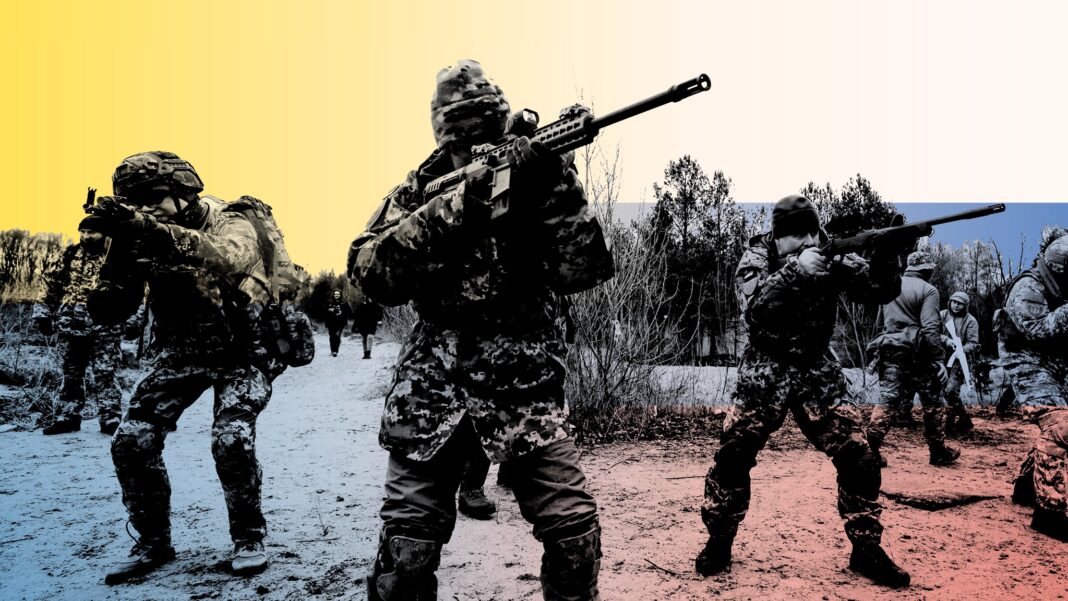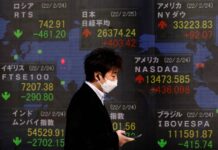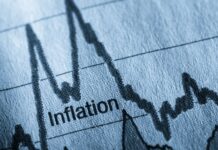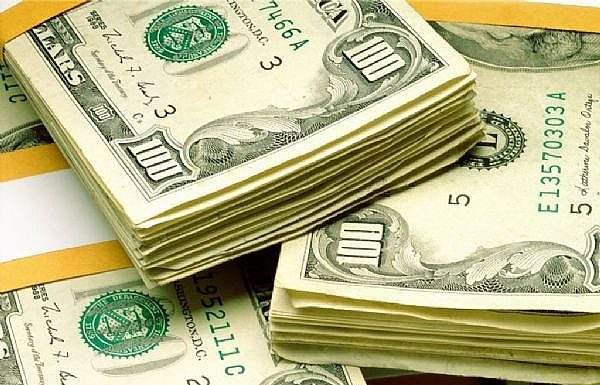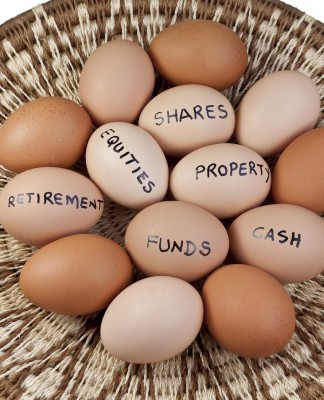Last Thursday, Russia launched a series of missile strikes on the Ukraine and drove troops further into the country, causing risk assets to begin a decline.
While President Biden assured the press that the United States and its allies would be imposing “severe sanctions” against Russia, world markets are still awaiting further news on Western sanctions.
“It’s imperative that investors keep a broad perspective and a calm demeanor at a time like this”, explains Richard Cayne of Meyer International in Bangkok, Thailand. “It’s important to craft a portfolio that’s well-rounded enough to help circumnavigate rising interest rates in the US amidst the Ukraine crisis”.
What occurred? According to Richard Cayne
Russia launched a series of missile strikes on Thursday against neighboring Ukraine, as well as sending in ground troops. Bond yields and global stocks nosedived as a result while energy prices and safe-haven assets rallied. Massive explosions occurred in the capitol city, Kyiv, as well as other major Ukrainian cities and key military and border command centers, including major airports. Russian soldiers have reportedly landed on the border of the Black Sea and Ukrainian President Volodymer Zalensky has announced that he intends to impose martial law throughout the country.
As Richard Cayne explains, “All major Asian indices are presently in decline and currently the STOXX 50 futures and Nasdaq are down 3.6% and 2.4%, respectively. Gold has rallied to USD 1,943/oz and bent crude prices have jumped to 102, bbl- 1.5 and 7 year highs, respectively”.
In the past 24 hours the 10-year Treasury yield has dropped nearly 12bps to 1.88%
What Richard Cayne thinks will happen next?
Before the attacks on Thursday, the West had put relatively limited sanctions into play against Russia’s aggression towards the breakaway public of Ukraine.
“The logic behind this strategy was to serve as an incentive to Russia to resume negotiations and also as a deterrent to escalating the conflict”, says Richard Cayne. “As the West has stated that more serious actions are still in reserve.”
President Biden told reporters on Thursday that both the US and its allies will impose more “severe sanctions” against Russia as markets awaited ongoing news regarding said sanctions.
Long term goals towards geopolitical domination and a flippant disregard for economic distress seem to bother President Putin not, as the military aggression in Ukraine has escalated into a full-scale war. Whether nations in Europe and NATO will decrease or desist Russian energy imports as a result of the escalating conflict in Ukraine remains a critical question for world markets.
Thus far, as a result of considerable inflationary pressures, it would appear many world economies are less inclined to do so, with few showing political will to that effect. The economic incentives for Russia’s desire to continue selling commodity exports and energy to European nations remains, by all appearances, strong.
In 2020, 37.9% of Russian exports and 36.5% of its imports were with countries in the European Union. An extended military campaign in the Ukraine could be strained by the significance of these trade relationships.
“World oil markets have gone into a backwards stage,” explains Richard Cayne, “as the price disparity levels between later-date futures contracts and first futures contracts has hit record positive”.
The fear of possible impending sanctions is seem as playing a large role in this, as refineries begin looking towards alternatives to Russian crude oil. The most extreme scenario, which would likely be defined by a lasting negative ramification to global growth could see the military engagement escalating to the point where the West is forced to accept a disruption of the energy flow in Russia.
Higher inflation rates that affect the spending power of consumers and a decrease of half a percent in global GDP could be seen if the price of oil were to reach USD 125/bbl or greater for two quarters. Possible long-term losses in equity markets could be brought about by the resulting decrease in worldwide earnings estimates and high risk premiums if the flow of energy in Russia were to find itself disrupted.
What Richard Cayne says investors need to do
Markets have not fully priced as a result of increased volatility in the escalating military conflict, despite the strong likelihood of ongoing military engagement in the region. As world leaders condemn the escalation of the military conflict in Ukraine, continually heightened volatility is expected. Oil-dependent economies could ultimately see economic losses in the non-energy sector if overall energy prices continue to increase.
As Richard Cayne explains: “With a well-diversified portfolio, the drawdowns brought about by negative geopolitical events are usually temporary, and while there’s no way to gauge the exact magnitude of what the geopolitical impact will be on world markets, equities are usually not deterred from increasing over a medium-term horizon”.
The biggest risk to investors, speaking historically in terms of geopolitical strife, is under-diversification and overreaction.
With the crisis in Ukraine and corresponding rising interest rates in the United States, it’s imperative for investors to maintain a broad perspective, stay calm and continue crafting a well-rounded portfolio.
There are 5 tips that can help prevent your portfolio from being derailed during these uncertain times.
1. Make sure your portfolio is diversified, says Richard Cayne.
When investors diversify across different asset classes, sectors and regions, they limit their exposure to particular risks associated with the ongoing war in Ukraine as well as other potential geopolitical perils across the globe.
For example, the S&P 500 revenue exposure between Russia and Ukraine combined is only approximately 1%
As Richard Cayne explains: “Bear market protection is protected through diversification. Since 1945, bear markets have seen the S&P 500 decline an average 34.5% and spend 39 months underwater. Within 30 months, a 60/40 portfolio declined an average of 20% and clocked record highs”.
2. Richard Cayne says commodities can be used to hedge against geopolitical turmoil.
Russia is the global largest supplier of wheat, as well as accounting for 30% of EU oil imports and 40% of EU gas imports, while Ukraine is a major exporter of oilseeds, wheat and corn.
In a climate of elevate rates, consistent inflation and accelerated growth, broad commodities serve as an excellent hedge during disruptions in supply chains in addition to yielding attractive returns.
“A prolonged intensification could potentially drive the price of gold over USD 2,000/oz”, says Richard Cayne.
3. Never underestimate the power of the US dollar, explains Richard Cayne.
When there are sentiments of risk in world financial markets or stages of increased certainty across the globe, the US dollar tends to rally as a safe haven currency.
“In the coming months, it is projected that market expectations of as many as seven interest rate hikes in the US will most likely support the US dollar” says Richard Cayne. “Because of this, presently the US dollar finds itself poised as an attractive currency to utilize”.
4. Richard Cayne says buy the global growth winners.
It is important that we remember that worldwide economic growth is currently above trend as global COVID restrictions are being lifted, despite the increased concerns about interest rates, inflation and the crisis in Ukraine. This will likely continue to bolster cyclical sectors and world markets, such as the Eurozone, financials and the energy sector.
“Over the course of the last month we have seen Eurozone equities outperform US equities, despite the Eurozone’s close proximity to the war in Ukraine”, explains Richard Cayne. “This suggests that economic recovery remains strong and that global markets will continue to thrive despite calamitous events in the Ukraine”.
5. Build a strong defense, advises Richard Cayne.
Balancing cyclical exposures with defensive strategies is one way for investors to reduce the risk of volatility within their portfolios, as economic uncertainty continues to steadily rise.
The preferred defensive sector has been, and still remains, global healthcare. The utilization of structured solutions, robust allocation strategies and dividend strategies also remain a healthy way of strengthening the risk-return profiles in portfolios, overall.
Richard Meyer Cayne
Richard Meyer Cayne of Asia Wealth Group Holdings, the Meyer Group, Meyer Asset Management and Meyer International Ltd has been involved in wealth management planning for decades. Originally born in Montreal Quebec, Canada, he later relocated to Tokyo, Japan for over 15 years and now resides in Bangkok, Thailand.
While he runs the Meyer Group and serves as the high credibility CEO of Asia Wealth Group Holdings Ltd, a London, UK Stock Exchange-listed Financial Holdings Company, as well as the Managing Director of the Meyer Group of Companies www.meyerjapan.com. and has additionally been the managing director of multiple organizations that specialize in helping high net worth individuals with succession planning .
Having worked with clients all over the globe with everything from portfolios to bonds to mutual funds to offshore investing to investing in retirement for your golden years, Richard Cayne of Meyer International can help you invest the right way and protect your cash.
Richard has been a financial advisor involved in wealth management planning solutions and asset management in Asia for over 25 years and while living in Tokyo, Japan, he assisted many high net-worth Japanese families create innovative international tax and wealth management planning solutions.
The financial holding public company of which he is CEO can be seen at Asia Wealth Group Holdings Ltd or the stock exchange link: https://www.aquis.eu/aquis- stock exchange/member?securityidaqse=AWLP Asia Wealth Group Holdings Ltd – Richard Cayne Thailand. Meyer Asset Management Ltd has been in the wealth management space since March 2000 and uses fundamental analysis along with modern portfolio theory.
His image worldwide as a professional advisor has been sterling and he maintains a firm command and understanding of all things finance-related.

